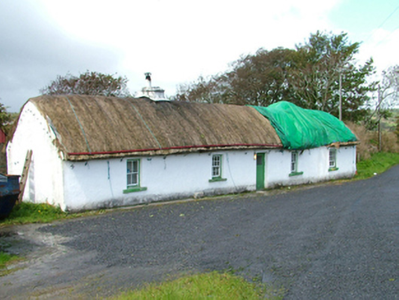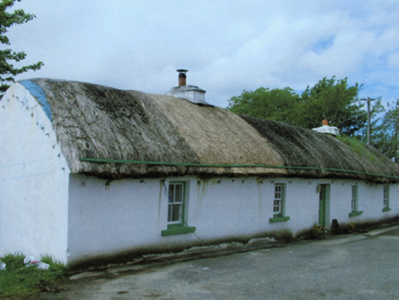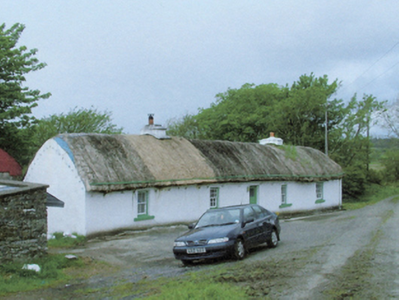Survey Data
Reg No
40909205
Rating
Regional
Categories of Special Interest
Architectural, Technical
Original Use
House
In Use As
House
Date
1840 - 1900
Coordinates
178697, 380785
Date Recorded
24/08/2011
Date Updated
--/--/--
Description
Detached five-bay single-storey vernacular house, built c. 1860 and extended c. 1900, having return to the rear (west). Pitched/domed straw thatched roof having metal pegs below eaves level and to gable ends for securing ropes over thatch, and having two rendered chimneystacks. Smooth rendered rubble stone construction. Square-headed window openings with cut stone sills and variety of two-over-two, six-over-six and six-over-three pane timber sliding sash windows. Square-headed door opening to central bay having battened timber door with glass panel. Set adjacent to rural lane to north-east of Killybegs and to the north-east of Inver. Single-bay outbuildings to site.
Appraisal
This charming and well-maintained thatched vernacular house retains its early form and character, and is an appealing feature in the isolated rural landscape to the north-west of Inver. Modest in scale, it exhibits the simple and functional form of vernacular building in Ireland. Of particular interest in the survival of the thatch roof, although recently renewed, which is now sadly becoming increasingly rare in Donegal. The rounded roof is a typical feature of thatched houses located close to the sea in exposed areas in the north-west of Ireland, while the metal pegs to the eaves were used to tie ropes (and sometimes nets) over the roof to secure it against the prevailing winds, as is the case here at Tievedooly. The integrity and visual expression of this building is enhanced by the retention of much of its salient fabric including a variety of timber sliding sash windows in differing-sized openings that add to the attractive vernacular character of this building. The location of the chimneystacks suggests that this building was extended by a bay to either end at some stage, and that it conforms to the ‘direct entry’ type that is characteristic of the vernacular tradition in north-west Ireland. This house represents a fine surviving example of a once ubiquitous building type in the rural Irish countryside, and represents one of the better surviving examples of its type in south-west Donegal.





